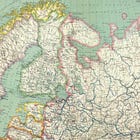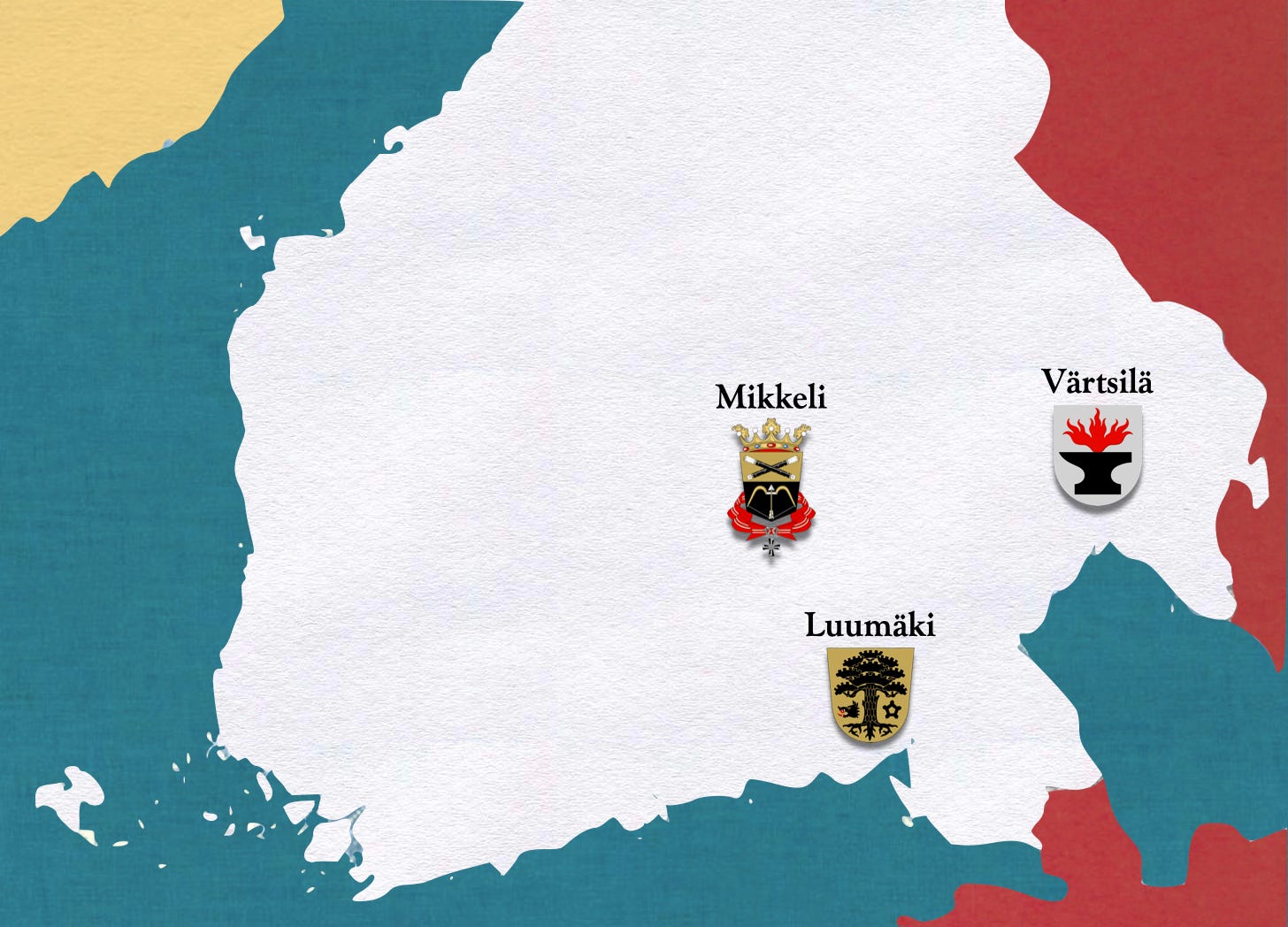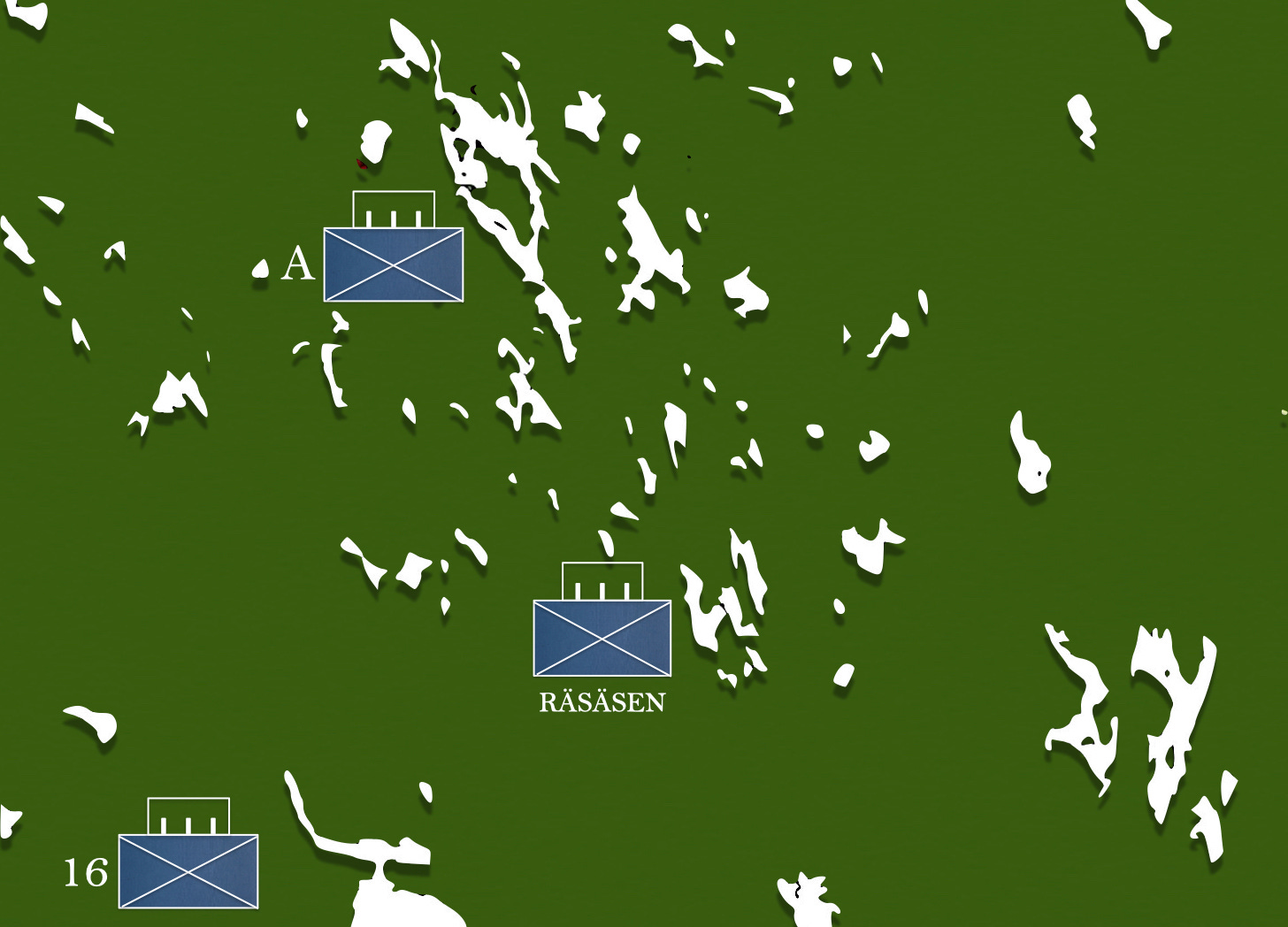This post presents the first problem of a multi-step decision-forcing case. If you have not done so already, you may wish to read the first three parts of this case.
5 December 1939
You are Lieutenant Colonel Aaro Pajari, commanding officer of the 16th Infantry Regiment of the Finnish Army.
Six days ago, formations of the Workers and Peasants Red Army crossed, at multiple points, the border that separates the territory of the Union of Soviet Socialist Republics from that of the Republic of Finland.
The main effort of the Soviet offensive appears to lie along the Karelian Isthmus, a land bridge which separates the Gulf of Finland (in the west) from Lake Ladoga (in the east.) Because of this, Field Marshal Mannerheim, in command of the armed forces of Finland, has assigned six of his nine infantry divisions into a formation (called the Isthmus Army) charged with stopping this advance.
Of the remaining infantry divisions, two have been deployed north of Lake Ladoga. Organized into an army corps (IV. Army Corps), these divisions are charged with preventing Soviet forces from threatening the rear areas of the Isthmus Army.
The division to which your regiment belongs, the 6th Infantry Division, was initially employed as the main reserve of the Isthmus Army. To that end, it had been stationed in the vicinity of the town of Luumäki, near the northeast corner of the Gulf of Finland.
Earlier today, Field Marshal Mannerheim detached your regiment from its parent division (and thus the Army of the Isthmus) and ordered that it move to Värtsila, in the sector defended by the IV. Army Corps.
After you give the orders for the movement of your regiment, you drive, as a passenger in a staff car, over the two hundred and fifty or so kilometers of country roads that connect Luumäki to Värtsilä.
6 December 1939
Soon after arriving in Värtsilä, you receive a telephone call from Colonel Paavo Talvela, an officer you have known for twenty years. (In 1919, you served together in the volunteer regiment that attempted to liberate Eastern Karelia from Bolshevik control. In 1930, you and Colonel Talvela contributed chapters to an anthology about that operation.)
Colonel Talvela, who is currently located in Mikkeli, at the headquarters of Field Marshal Mannerheim, tells you that he has just taken command of an ad hoc brigade charged with defeating the Soviet forces moving along two of the east-west corridors that run through the heavily-wooded lake country east of Värtsilä. He also tells you that your regiment, the 16th Infantry, will provide his command, which is otherwise composed of two four-battalion battle groups, with its reserve.
One of these groups, known as Task Force A, has established blocking positions in the northern part of this sector. The other, Task Force Räsänen, is retreating along the road that runs across a group of lakes in the southern part of the sector. (Many of these lakes, such as Upper Tolva, Lower Tolva, and Tolva, have names that include the word “Tolva.”)
After sharing what little he knows of the battles fought east of Värtsilä and the subsequent retreat of Task Force Räsänen, he tells you to drive to the vicinity of the aforementioned lakes and find out what is going on there. He adds that, in the course of doing this, you are to consider courses of action aimed at:
stopping the advance of Soviet forces pursuing Task Force Räsänen
destroying the Soviet forces pursuing Task Force Räsänen
preserving the fighting power of Task Force Räsänen
At 2200, you arrive at the village of Lake Tolva, on the west bank of the body of water of the same name. There you find Lieutenant Colonel Räsänen, commanding officer of the Task Force that bears his name.
Räsänen tells you that the officers and men of his task force, a third of which is now assembled in the vicinity of the village, are physically exhausted, demoralized, and subject to panic. What is worse, they have found no way to deal with either the Soviet tanks advancing along roads or the night attacks against Finnish flanks conducted by Soviet infantry.
As it is nighttime, you cannot see much of the surrounding terrain. You do notice, however, the ridge that rises, on the west bank of Lake Tolva, just north of the village.
You also notice the following:
The lake has begun to freeze.
Ten centimeters of snow lie upon the ground.
The sun goes down at 1515 in the afternoon and rises a little after 0900 on the following morning.
A waning crescent moon is shining, and will continue to shine for the next three nights.
The roads (depicted in brown on the map) are metaled and well-drained, but not paved.
The portion of Task Force Räsänen currently in (or near) the village consists of a complete bicycle battalion, a single rifle company, and a battery of four 76.2mm mountain guns.
What now, Lieutenant Colonel Pajari?
Please feel free to use the comments section to propose the actions that the protagonist should take and the orders he should give. When doing so, please refrain from providing any information that spoils the game for other players. In particular, please avoid describing the actions that the historical Lieutenant Pajari took, the orders that he gave, and the results of those decisions.













Playing strategy games is my entire experience, and assuming that I read the map right - the enemy attacks on the road from Agla to "Village":
- it's likely that the tanks will move on the roads (I guess), so need to establish some chokepoints along the east-west road; it's unclear how to actually damage the tanks
- the mention of the ridge means that's probably where the mortar company should be placed; can the 81mm mortars destroy or at least heavily damage tanks? (I guess so)
- I would assume that enemy infantry might try to cross the freezing lake as well, so I would distribute one battalion (3 rifle companies) to protect against that
- another battalion moved forward to about where the roads interesect upper/lower Tolva, arranged so that they act as early warning and in a way to allow fast fallback
- keep the 3rd battalion of regiment 16 and the remains of Task Force Räsänen in reserve
And thus begins alternate history where Finland loses fast 😅 My concern is that likely the enemy will attack not where expected, with the only clear "goal" being the ridge which seems to dominate the road and lakes.
In a computer game, one would have many more scout units very early ahead, to allow fast redeployment of reserved to counteract the (so far) unknown enemy. I don't think that works in real life, though.
A good deal depends on how fast the 16th Infantry Regiment can move into position.
First, request anti aircraft and anti tank support as well as additional artillery units. Second, order the troops on hand to do the following:
1. The bicycle battalion (-) and one of the mountain cannons will establish a blocking position in and around Tolva Village, Lake Tolva and to the south of the lake IOT defeat Soviet forces and prevent them from moving further west.
2. The remaining company from the bicycle battalion will establish a defensive position on the ridge to the north to interdict the northern part of the lake, areas to the north of the lake in and around Hirvas and protect the artillery battery (-). The battery (-) will establish themselves on the west side of the ridge and position observers as far forward as communications permit to attack Soviet forces and interdict the road from the east.
3. The separate infantry company will detach one platoon as a reserve and position itself in Tolva, with planning priorities of attacking to defeat and Soviet penetration of the blocking position along the road or forces attempt to bypass Tolva. The company (-) will form reinforced squad sized patrols IOT defeat Soviet infiltration and flank attacks by ambushing them as far forward as practicable.
4. Order the remaining elements of the Task Force to conduct raids and ambushes of Soviet units, particularly logistical support units or convoys (fuel, ammunition and food), and HQ units. These will have to be as aggressive as possible IOT disrupt Soviet forces rapidly. Nighttime and twilight attacks are preferred given the imbalance in forces and Soviet air power. Units will establish concealed rest areas to allow units to rest, recuperate and resupply. Find or fabricate skis to assist with movement in snowy conditions.
Once the 16th Infantry Regiment arrives and assuming the Soviets have not penetrated the Tolva area, one battalion and the regimental mortar battery will reinforce the blocking positions in and around Tolva Village, Hirva Village and to the south, while the other battalions form additional patrols to attack Soviet forces as previously described. The Regimental HQ and logistics units will position themselves in and around Tolva Village to provide support and resupply. As soon as possible, resupply any units operating to the east as well. Once the lakes freeze solid, things get more complicated, but if the snow deepens, wheeled vehicles and dismounted infantry will be road bound, whereas ski troops will not.